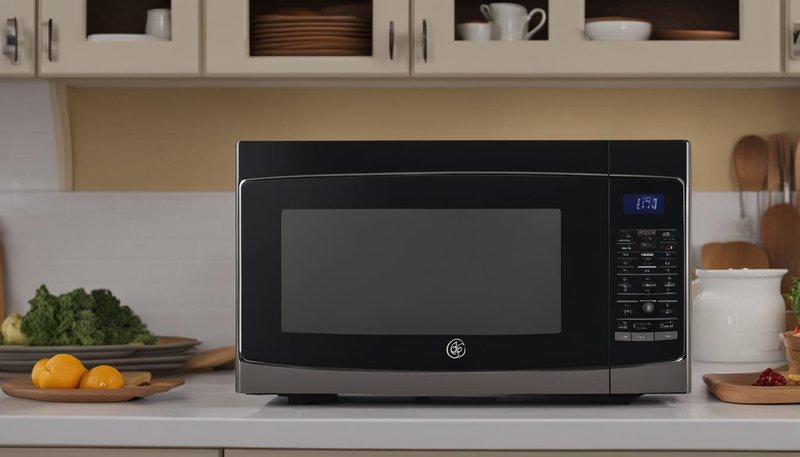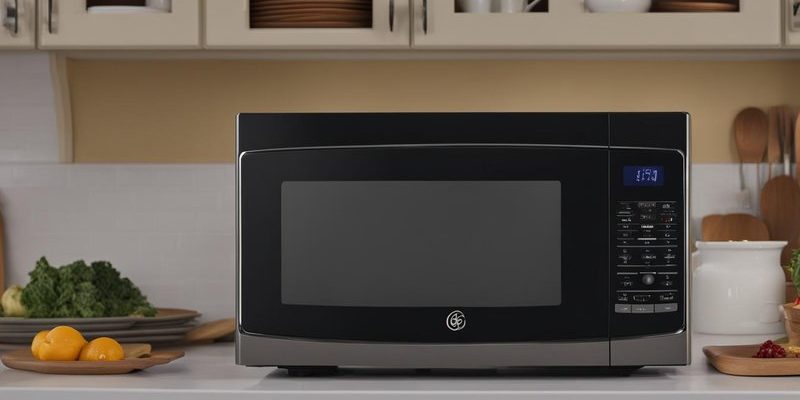
You’re ready to heat up last night’s leftovers when you suddenly see an error message on your GE microwave. It’s a jumble of letters and numbers, specifically the code “OE,” staring back at you. It’s like your microwave has decided to speak a secret language. At first glance, this might seem like a minor hiccup, but understanding what this error code means is crucial to getting your microwave back in action.
Microwaves, like many other modern appliances, are equipped with diagnostic tools that alert us when something’s amiss. The “OE” error code is one of these alerts. It’s essentially your microwave’s way of waving a little red flag, saying, “Hey, I’ve got a problem!” But what exactly does that problem entail? Let’s dive in to decode this mystery together and find out how to tackle it.
Understanding the “OE” Error Code
The “OE” error code on your GE microwave typically stands for “Open Thermal Sensor” or that there is an issue with the “Over Temperature” sensor. Sounds technical, right? Well, here’s the deal: microwaves have sensors that monitor various components to ensure everything is running smoothly. Think of these sensors as the appliance’s way of keeping an eye on itself to prevent overheating or other potential hazards.
So why does the “OE” code appear? One common reason is a faulty thermal sensor. Just like your car has gauges to tell you when it’s running hot, your microwave uses a thermal sensor to ensure it doesn’t overheat. If this sensor fails, it might incorrectly indicate that the microwave is too hot, triggering the code. And let’s face it—safety first! The microwave wants to prevent any risk of damage or fire.
Another potential cause could be a trapped piece of food or debris affecting the sensor. Microwave mess-ups happen, and sometimes tiny food particles end up where they shouldn’t. This can lead to false readings, making the microwave think it’s overheating when it’s actually not. Luckily, this is usually an easy fix, often just requiring you to clean those hard-to-reach spots.
Causes of the OE Error Code
Let’s get into the nitty-gritty of why the “OE” error surfaces. One significant reason is the faulty connection or outdated components within your microwave. Over time, components can wear down or connections can loosen—kind of like how shoelaces become untied if neglected. This deterioration affects the microwave’s internal communication, causing incorrect error messages.
Imagine you’re trying to work with an old laptop; sometimes it misbehaves just because it’s been around for a while. Similarly, aging microwaves might throw out an “OE” error simply due to the natural wear and tear of internal parts. Regular maintenance can help catch these issues before they escalate, so if you’re seeing this error frequently, it might be time for a check-up.
Another cause might be the microwave’s environment. If your microwave is located in a particularly humid or greasy area—such as over a stove—moisture or grease can interfere with sensors. It’s similar to how damp weather can make technology act up. Ensuring your microwave has a clean, dry environment can prevent this error from appearing.
Troubleshooting the OE Error
Alright, you’re seeing the dreaded code—what do you do next? First off, take a deep breath; it’s rarely as bad as it seems. The initial step is to unplug the microwave and let it cool down. This gives the sensors a chance to reset. Sometimes, it’s like rebooting your phone when it’s acting up: a simple restart can work wonders.
Next, examine the microwave for any visible signs of damage or food debris. Open it up and give those parts a good cleaning. Just as you wouldn’t put on a dirty pair of glasses, your microwave’s sensors need to be free of grime to work correctly. Remember to gently clean without applying too much force, as these parts can be quite delicate.
If cleaning and resetting don’t do the trick, you might need to call in a professional. The sensors or internal wiring may need repair or replacement, and tackling these issues without experience could lead to more harm than good. Think of it like calling a mechanic for a car issue rather than trying to fix it with no tools or knowledge.
Preventing Future Error Codes
Nobody wants to deal with the hassle of frequent microwave errors, so how do you prevent the “OE” code from returning? Simple housekeeping measures go a long way. Regularly clean both the interior and exterior of your microwave. Much like giving your car a wash, regular cleaning helps it function smoothly.
Ensure the microwave has proper ventilation and is not wedged between other appliances or surfaces. A little breathing room helps prevent overheating and allows for more effective sensor operation. It’s like how athletes need space to run efficiently—you want your microwave’s sensors to work without obstruction.
If your microwave is nearing the end of its lifespan, consider whether it’s time for an upgrade. Sometimes, no matter how well you maintain it, older models are simply more prone to issues. Upgrading to a newer model might save you time and frustration in the long run. Think of it as replacing an old pair of shoes; sooner or later, you’ll need a new pair.
When to Seek Professional Help
If you’ve tried the basic troubleshooting steps and the “OE” error persists, it might be time to call in the pros. Attempting complex repairs without the proper knowledge can worsen the situation. Professionals have the tools and expertise to diagnose and resolve the problem effectively. It’s like calling a tech expert to troubleshoot your computer—sometimes, you just need that extra assistance.
Opting for professional help ensures that any replacement parts used are of high quality and compatible with your microwave. This minimizes the risk of recurrent errors and potential future failures. Ultimately, professional intervention can extend the life of your microwave, offering peace of mind that it’s in good hands.
In conclusion, dealing with an “OE” error code doesn’t have to be a nightmare. Understanding the message your microwave is trying to convey and taking the right steps can keep your appliance running smoothly. By maintaining regular upkeep and knowing when to ask for help, you’ll keep your kitchen creations cooking without a hitch.
